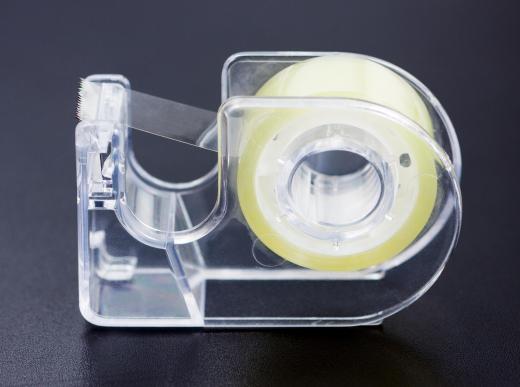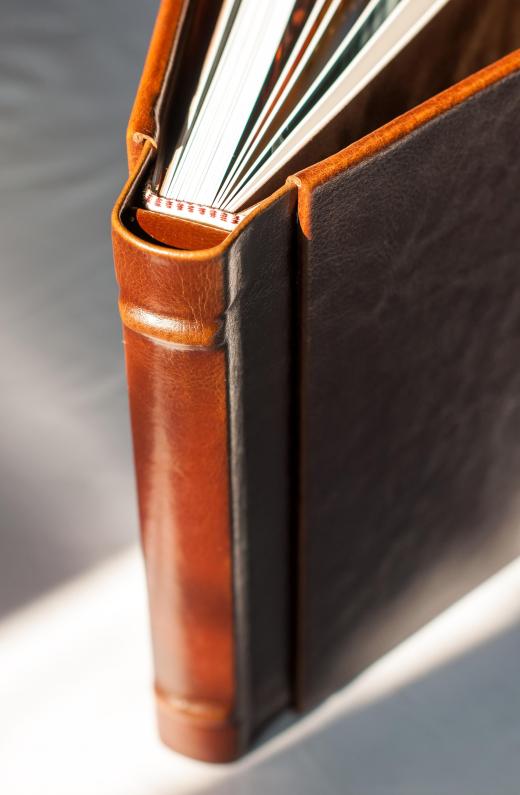Dry adhesive is a substance used to adhere two objects without the use of water or other substances, and is often made using latex and silicone. Usually, types of dry adhesive come in the form of flat adhesive panels that are either stiff or stretchy, or flexible tape generally sold in a dispenser or formed into a roll. Some types of dry adhesive can be rolled on using an adhesive rolling mechanism, or by applying an adhesive panel to a surface after the film protecting the adhesive has been removed. This type of adhesive is in contrast with wet adhesive like the standard glue bottles, paste, and glue sticks with which most people are familiar. Different types of dry adhesive are used for administrative tasks, crafting, and flooring installation.
One type of dry adhesive is commonly used for installing flooring. Dry flooring adhesive can adhere many different types of flooring, including vinyl and carpet. Some types of flooring adhesives, called conductive adhesives, are specially designed to control the buildup of static electric charge in flooring. Conductive adhesive is usually used in combination with conductive flooring to reduce the chances of electric zaps from foot traffic static. Static resistant flooring can be vital in workplaces that handle sensitive electronics that can be damaged by a rogue static charge.

The dry adhesive dispensers used in office work are generally used to stick flat things to each other, like fastening a photo inside a photo album. These rollers are also commonly used for scrapbooking, which is a folk art style in which the artist mounts memento objects and designs pages to complement the objects and represent the memories. Rolling dry adhesive dispensers for scrapbooking and office work can be permanent or temporary adhesive, and are generally purchased at arts and crafts or office supply stores. Most of these dispensers look much like corrective tape dispensers used to manually correct typewriter mistakes, but use adhesive that is sticky on both sides instead of a substance meant to stick to the paper to obscure mistakes.

In the art world, dry adhesive can also be called adhesive film or mounting film. It is a piece of film with two sheets, one on each side, covering the adhesive. When the mounting film is ready to mount, one side sticks to the art, while the other side sticks to the surface to which it will be mounted. Serious artists looking to preserve pieces of art look for acid-free mounting film, which is less likely to cause discoloration to the mounted material over time.
